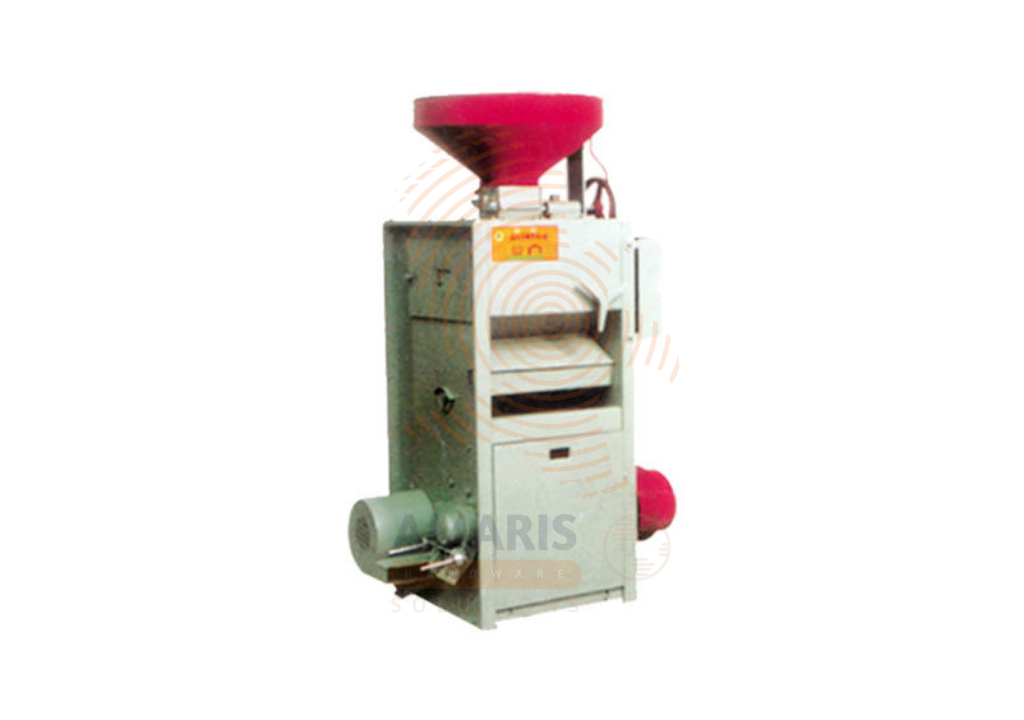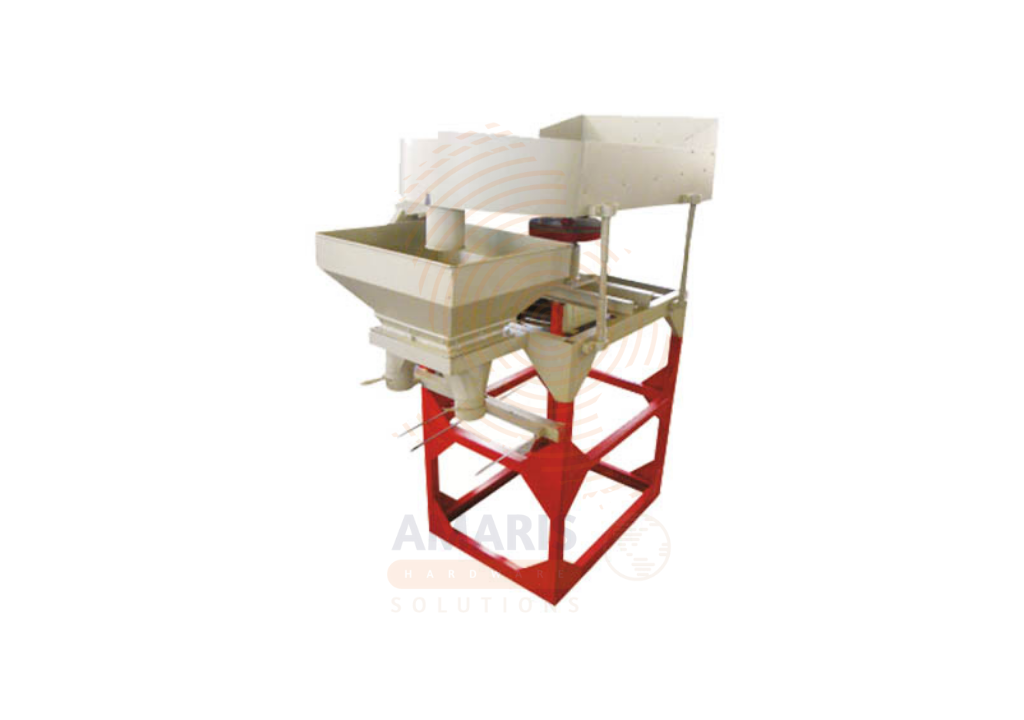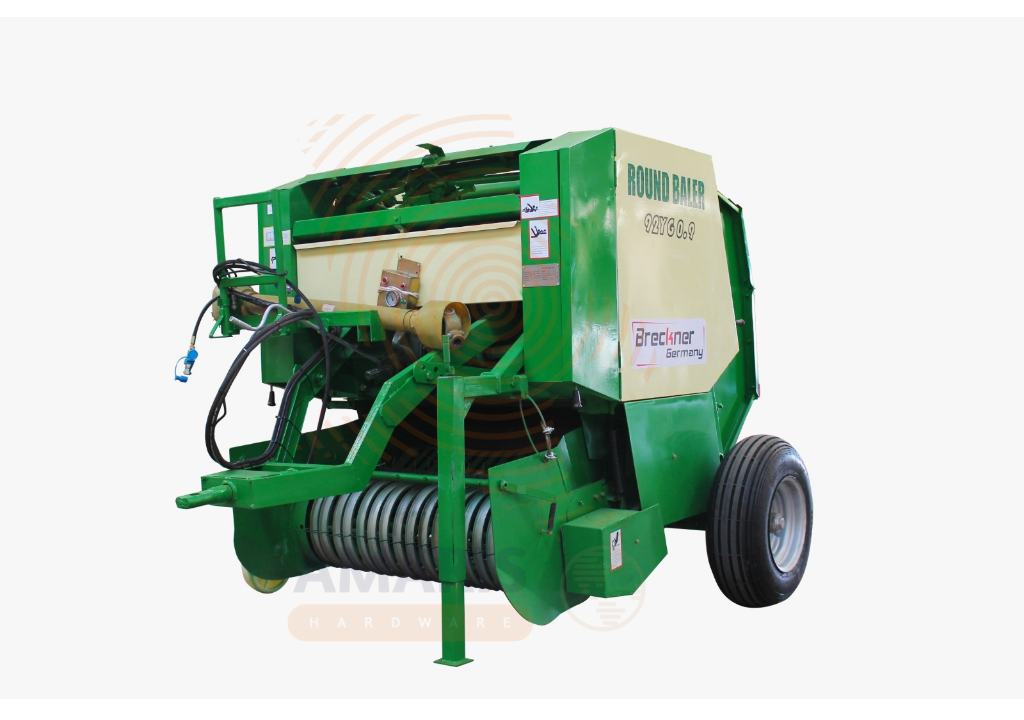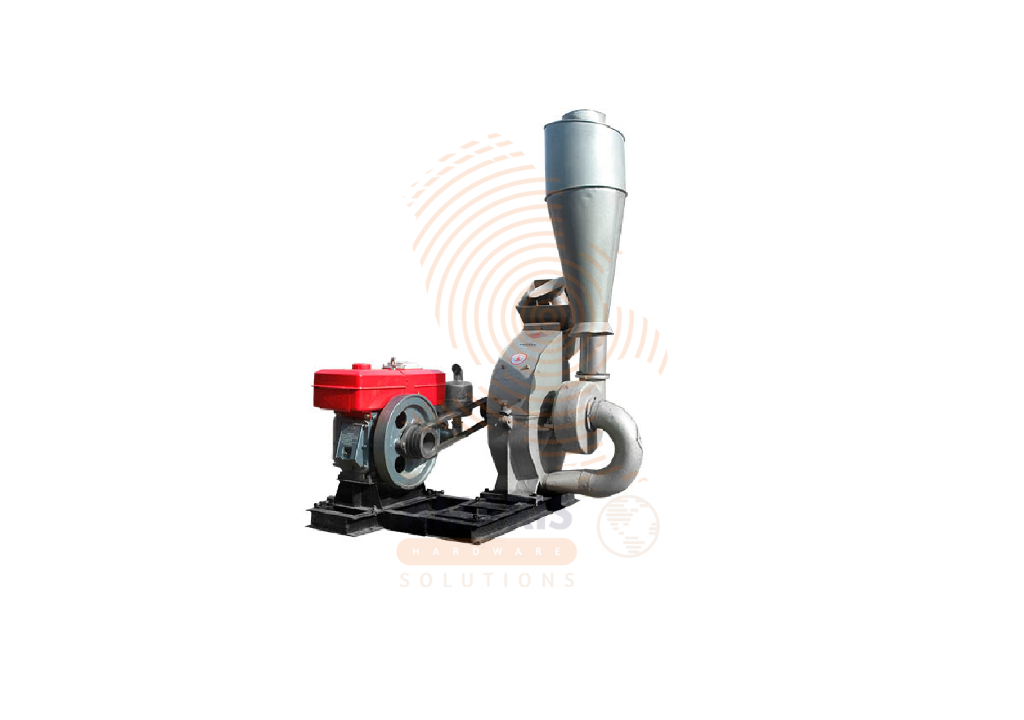“From Paddy to Perfection: The Rice Mill Advantage” 🌾🔧🍚

For anyone involved in rice production, a Rice Mill is the heart of the process. It’s the machine that transforms raw paddy into polished, market-ready rice, separating husks, bran, and impurities along the way. From small-scale farmers to commercial operators, the rice mill is an essential investment for improving product quality, efficiency, and profitability.
Whether you’re running a local mill, managing a cooperative, or upgrading your farm’s processing capabilities, a rice mill ensures that every grain reaches its full potential.
What is a Rice Mill? 🛠️
A rice mill is a mechanized system designed to process paddy rice into edible white or brown rice. It typically performs several steps:
- Husking – Removing the outer husk to produce brown rice.
- Polishing/Milling – Grinding the brown rice to remove bran layers, creating white rice.
- Grading – Sorting grains by size, quality, and broken vs. whole grains.
- Cleaning – Eliminating dust, stones, and foreign matter.
Modern rice mills can handle small or large volumes and often incorporate conveyors, hoppers, and sieving systems to streamline production.
Key Uses of a Rice Mill 🔍
- Processing Paddy Rice – Converts harvested paddy into edible rice.
- Quality Enhancement – Produces polished, uniform grains suitable for the market.
- Separation & Cleaning – Removes husks, dirt, stones, and broken grains.
- Commercial Production – Ideal for mills, cooperatives, and rice distributors.
- Home or Small-Scale Farming – Compact mills make small batches more manageable.
Benefits of Using a Rice Mill ⚡
- Efficiency – Process large volumes faster than manual methods.
- Improved Quality – Produces polished rice with minimal broken grains.
- Cost-Effective – Reduces labor and increases the market value of rice.
- Versatility – Some models can handle different grain types or sizes.
- Consistency – Ensures uniform grain size and polished finish for better packaging and consumer satisfaction.
How to Operate a Rice Mill Effectively 💡
- Prepare the Paddy – Ensure the grains are dry and free from debris.
- Load the Machine Carefully – Avoid overfilling to prevent jams.
- Start the Husking Process – Remove outer husks efficiently without damaging grains.
- Polish and Mill – Adjust settings based on the desired rice type (brown or white).
- Sort and Collect – Separate whole grains from broken ones, then package or store appropriately.
Tips for Optimal Rice Milling 🧰
- Clean Regularly – Prevent dust and husk buildup that can affect performance.
- Check Blades & Rollers – Replace worn components to maintain efficiency.
- Monitor Moisture Content – Paddy with high moisture may clog the mill.
- Lubricate Moving Parts – Ensure smooth operation and reduce wear.
- Store Properly – Keep the mill in a dry, stable environment.
Rice Mill Varieties 🔍
- Small-Scale/Home Mills – Compact, ideal for small farmers or household use.
- Medium-Scale Mills – Suitable for cooperatives or local processing.
- Industrial/Commercial Mills – High-capacity machines designed for large-scale production.
- Electric or Diesel Powered – Options depending on energy availability and location.
Why Every Farmer Should Consider a Rice Mill 🌾
Investing in a rice mill transforms rice farming from manual labor into efficient, profitable operations. By controlling the milling process, farmers can produce high-quality rice that commands better prices in the market. It also reduces waste by separating broken grains for secondary use or sale, ensuring that nothing goes to waste.
At Amaris Hardware Solutions, we understand how crucial reliable, durable, and efficient milling equipment is for farmers and commercial operators. A good rice mill improves quality, saves time, and boosts profitability, making it one of the smartest investments in rice production.
✅ In short: The rice mill is more than a machine—it’s a game-changer for quality, efficiency, and income. Whether for a home setup, a small mill, or large-scale production, it ensures that every grain of rice reaches its full potential.


 Acrylic Sealants
Acrylic Sealants Construction Adhesives
Construction Adhesives Double-Sided Tape
Double-Sided Tape Duct Tape
Duct Tape Electrical Tape
Electrical Tape Epoxy & Resins
Epoxy & Resins Masking Tape
Masking Tape
 Automotive Wrenches & Socket Sets
Automotive Wrenches & Socket Sets Battery Chargers & Jump Starters
Battery Chargers & Jump Starters Car Jacks & Stands
Car Jacks & Stands Car Wash & Detailing Products
Car Wash & Detailing Products Diagnostic Tools
Diagnostic Tools Tire Inflators
Tire Inflators Vehicle Lighting
Vehicle Lighting Oil & Lubricants
Oil & Lubricants
 Adhesives & Sealants
Adhesives & Sealants Bricks & Blocks
Bricks & Blocks Cement & Concrete
Cement & Concrete Drywall & Plaster
Drywall & Plaster Flooring (Tiles, Wood, Laminate)
Flooring (Tiles, Wood, Laminate) Lumber & Plywood
Lumber & Plywood Paints, Primers & Coatings
Paints, Primers & Coatings Insulation Materials
Insulation Materials Roofing Materials
Roofing Materials
 Circuit Breakers
Circuit Breakers Electrical Cables & Wires
Electrical Cables & Wires Switches & Sockets
Switches & Sockets Fuses & Relays
Fuses & Relays Connectors & Terminals
Connectors & Terminals Electrical Boxes & Panels
Electrical Boxes & Panels Conduit & Fittings
Conduit & Fittings Lighting Fixtures & Bulbs
Lighting Fixtures & Bulbs Extension Cords & Power Strips
Extension Cords & Power Strips
 Anchors
Anchors Bolts
Bolts Clips & Clamps
Clips & Clamps Screws
Screws Nuts
Nuts Washers
Washers Rivets
Rivets Nails
Nails Threaded Rods
Threaded Rods
 Hammers
Hammers Measuring Tools (Tapes, Levels, Calipers)
Measuring Tools (Tapes, Levels, Calipers) Screwdrivers
Screwdrivers Pliers & Cutters
Pliers & Cutters Saws & Blades
Saws & Blades Chisels & Punches
Chisels & Punches Allen Keys & Hex Keys
Allen Keys & Hex Keys Ratchets & Socket Sets
Ratchets & Socket Sets Wrenches & Spanners
Wrenches & Spanners
 Power Tool Accessories (Blades, Bits, Discs)
Power Tool Accessories (Blades, Bits, Discs) Rotary Tools
Rotary Tools Saws (Circular, Jigsaw, Reciprocating)
Saws (Circular, Jigsaw, Reciprocating) Drills & Drivers
Drills & Drivers Grinders & Sanders
Grinders & Sanders Heat Guns
Heat Guns Nail Guns
Nail Guns Impact Wrenches
Impact Wrenches Batteries & Chargers
Batteries & Chargers
 Pipes & Fittings (PVC, Copper, PEX)
Pipes & Fittings (PVC, Copper, PEX) Plumbing Tools
Plumbing Tools Pumps & Motors
Pumps & Motors Sealants & Adhesives for Plumbing
Sealants & Adhesives for Plumbing Valves & Taps
Valves & Taps Water Heaters
Water Heaters Drainage Systems
Drainage Systems Faucets & Fixtures
Faucets & Fixtures Hoses & Tubing
Hoses & Tubing
 Hinges & Latches
Hinges & Latches Hooks & Brackets
Hooks & Brackets Window Hardware
Window Hardware Chains & Cables
Chains & Cables Casters & Wheels
Casters & Wheels Shelving & Storage Systems
Shelving & Storage Systems Door Handles & Locks
Door Handles & Locks Drawer Slides & Cabinet Hardware
Drawer Slides & Cabinet Hardware
 Personal Protective Equipment (PPE)
Personal Protective Equipment (PPE) Respirators & Masks
Respirators & Masks Safety Glasses
Safety Glasses Safes
Safes Security Cameras
Security Cameras Gloves
Gloves Helmets
Helmets Ear Protection
Ear Protection Fire Safety Equipment
Fire Safety Equipment Locks & Padlocks
Locks & Padlocks Motion Sensors & Alarms
Motion Sensors & Alarms
 Garden Fencing
Garden Fencing Garden Furniture Hardware
Garden Furniture Hardware Lawn Mowers
Lawn Mowers Trimmers & Edgers
Trimmers & Edgers Shovels & Spades
Shovels & Spades Rakes & Hoes
Rakes & Hoes Pruning Shears & Loppers
Pruning Shears & Loppers Watering Systems (Hoses, Sprinklers, Nozzles)
Watering Systems (Hoses, Sprinklers, Nozzles)
 Interior Paints
Interior Paints Paint Brushes & Rollers
Paint Brushes & Rollers Paint Strippers & Thinners
Paint Strippers & Thinners Paint Trays & Accessories
Paint Trays & Accessories Exterior Paints
Exterior Paints Spray Paints
Spray Paints Primers & Undercoats
Primers & Undercoats Varnishes & Stains
Varnishes & Stains
 Gaskets & Seals
Gaskets & Seals Hydraulic Fittings
Hydraulic Fittings Industrial Fasteners
Industrial Fasteners Industrial Hoses
Industrial Hoses Lubricants & Greases
Lubricants & Greases Metal Sheets & Bars
Metal Sheets & Bars Bearings & Bushings
Bearings & Bushings Belts & Pulleys
Belts & Pulleys
 HVAC Filters
HVAC Filters Insulation for HVAC
Insulation for HVAC Air Conditioners
Air Conditioners Refrigerants
Refrigerants Ventilation Ducts & Fittings
Ventilation Ducts & Fittings Thermostats & Controllers
Thermostats & Controllers Fans & Blowers
Fans & Blowers
 Pegboards & Hooks
Pegboards & Hooks Shelving Units
Shelving Units Storage Bins & Containers
Storage Bins & Containers Toolboxes & Tool Chests
Toolboxes & Tool Chests Workbenches
Workbenches Drawer Organizers
Drawer Organizers Labeling Supplies
Labeling Supplies
 Welding Accessories (Clamps, Brushes)
Welding Accessories (Clamps, Brushes) Welding Electrodes & Rods
Welding Electrodes & Rods Welding Helmets & Gloves
Welding Helmets & Gloves Welding Machines
Welding Machines Soldering Irons & Stations
Soldering Irons & Stations Flux & Solder Wire
Flux & Solder Wire
 Generator Accessories
Generator Accessories Inverters
Inverters Portable Generators
Portable Generators Power Inverters
Power Inverters Transfer Switches
Transfer Switches Diesel & Gasoline Generators
Diesel & Gasoline Generators
 Transport Equipment: Carts, Dollies, and Hand Trucks
Transport Equipment: Carts, Dollies, and Hand Trucks Storage Solutions: Pallets, Racks, and Containers
Storage Solutions: Pallets, Racks, and Containers Lifting Equipment: Hoists, Cranes, and Jacks
Lifting Equipment: Hoists, Cranes, and Jacks Conveyors and Accessories: Belts and Rollers
Conveyors and Accessories: Belts and Rollers






